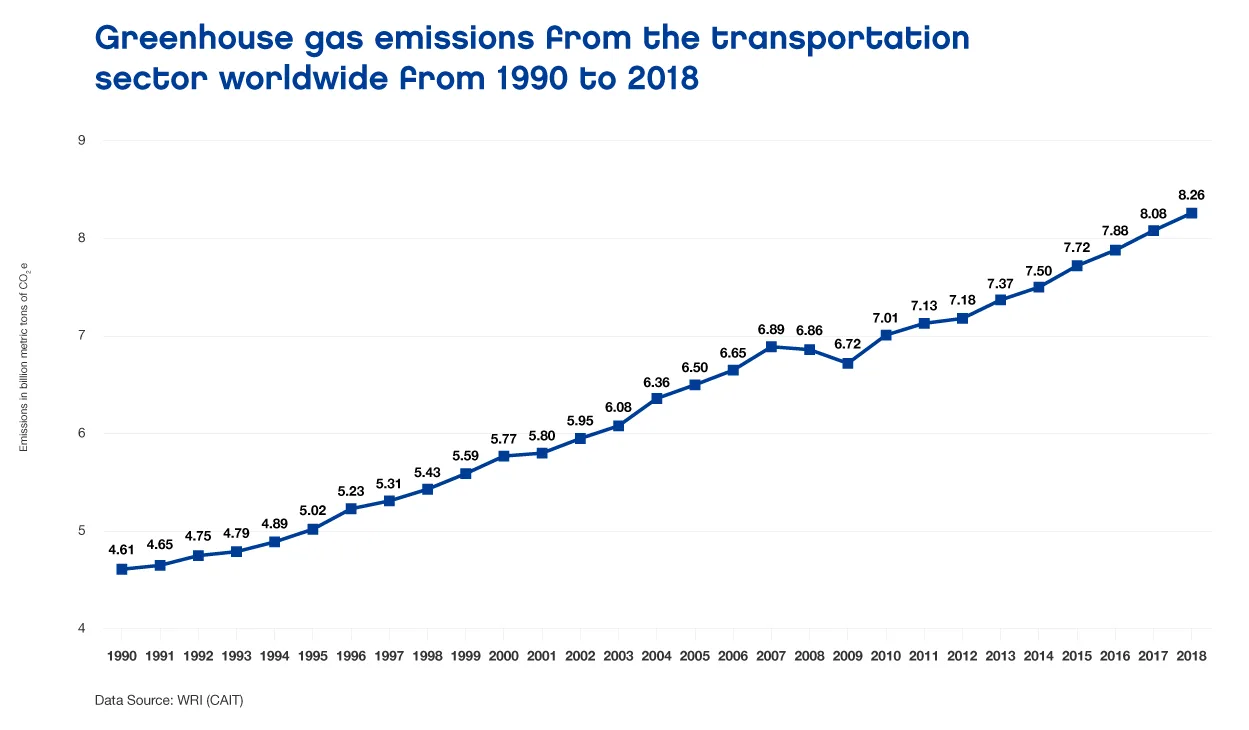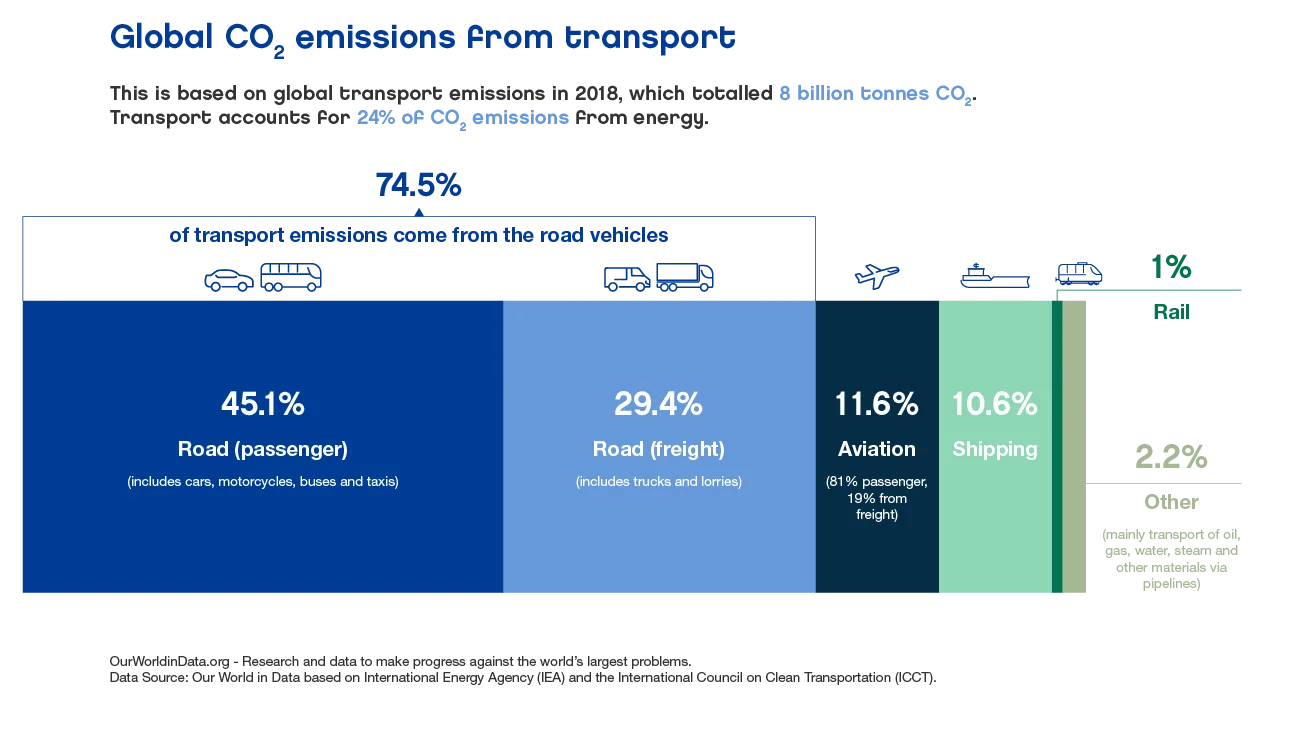
Transportation
3 minute read
Towards sustainable mobility
We move more people and goods further, faster and more reliably than ever before, and the demand for transport is set to more than double in the next 30 years. However, mobility comes at a price: it is currently responsible for a quarter of global CO2 emissions.
The urgency to address transport emissions must drive a fundamental change in the way we power mobility. We cannot continue depleting fossil resources and releasing its sequestrated carbon into the atmosphere. The era of fossil fuels must end.
So, how can we reduce the emissions of passenger cars, freight transport and aviation, whilst demand for all these modes of transport is set to grow?

The United Nations has defined sustainable transport as “the provision of services and infrastructure for the mobility of people and goods – advancing economic and social development to benefit today’s and future generations – in a manner that is safe, affordable, accessible, efficient, and resilient, while minimizing carbon and other emissions and environmental impact.”
Sustainable mobility will require more shared and public transport, leveraging technology to make mobility smarter, walking and cycling more, but most importantly, we should drastically reduce emissions of cars, trucks, ships, trains and planes, all whilst ensuring access to affordable transport to all, and putting safety first.
When it comes to reducing emissions, we will need to combine all available solutions from electricity to hydrogen and renewable fuels. Only by combining these solutions will we be able to act fast. The real question should not be how to power mobility, but rather whether the energy carrier is renewable and sustainable?

We need to rid transport of fossil fuels, no matter whether they are refined into a liquid fuel or used to generate electricity or hydrogen. We need a new sustainable transport future based on renewables: renewable energy to produce electricity, hydrogen or e-fuels, or renewable raw materials to produce liquid or gaseous fuels.
The question is not whether our vehicles are powered by an internal combustion engine, hydrogen fuel cell or electric drivetrain, but rather if the origin of the respective energy carrier is renewable.
Fuels like Neste MY Renewable Diesel™ reduce greenhouse gas emissions as much as 75-95%* over the life cycle of the fuel, which is on par with vehicles running on renewable electricity or green hydrogen. They are already commonly used, and production is set to grow exponentially over the coming decade.
Once the use of new types of raw materials, such as forestry and agriculture waste, as well as solid municipal waste becomes mainstream, renewable fuels could replace all fossil ones currently used in aviation and maritime transport, as well as a large part of fossil fuels now used in road transport.
Transport is changing, and renewable fuels will play a key role in driving sustainable mobility.
Read more about why Neste MY Renewable Diesel is an excellent choice.
*) The GHG emission reduction percentage varies depending on the region-specific legislation that provides the methodology for the calculations (e.g. EU RED II 2018/2001/EU for Europe and US California LCFS for the US), and the raw material mix used to manufacture the product for each market.